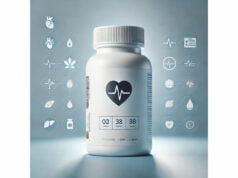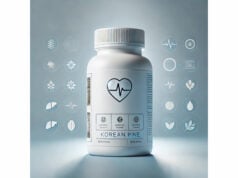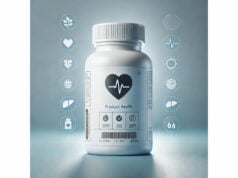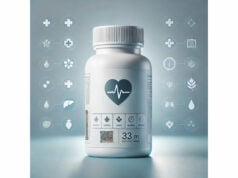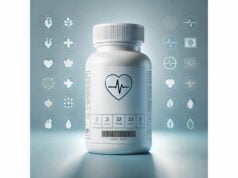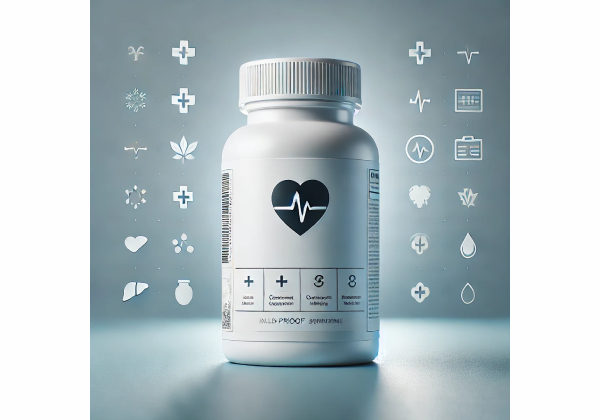
Kynurenine (KYN) is a pivotal metabolite formed when your body breaks down the essential amino acid tryptophan. It sits at the hub of the “kynurenine pathway,” which links diet, immunity, brain signaling, and cellular energy. In immune cells and the brain, kynurenine acts as both a messenger and a substrate, feeding into branches that produce neuroactive compounds such as kynurenic acid and quinolinic acid and supporting nicotinamide adenine dinucleotide (NAD⁺) synthesis. Interest in kynurenine has surged because inflammation, stress, infection, and lifestyle patterns can shift this pathway and, in turn, influence mood, cognition, pain sensitivity, and metabolic resilience. That promise is counterbalanced by risk: pushing the pathway in the wrong direction may worsen cognition or immune function. This guide explains what kynurenine is, how it works, where the evidence is strong (and where it is not), how people are using it in practice, why most individuals should not supplement indiscriminately, realistic dosing guardrails used by some products, and the side effects and red flags to watch for if you decide to experiment with professional oversight.
Key Insights
- May modulate brain and immune signaling through transport into the brain and downstream metabolites (kynurenic acid, quinolinic acid) that influence NMDA receptors and immunity.
- Human evidence for direct kynurenine supplementation is limited; lifestyle and medical factors that reshape the pathway are usually more effective and safer.
- No standard dose exists; some supplements list 25–150 mg/day, but conservative trials (if any) should stay at the low end and be time-limited.
- Avoid use during pregnancy and breastfeeding, with psychotic disorders, or alongside strong glutamate-modulating drugs without clinician oversight.
Table of Contents
- What is kynurenine and how it works
- Benefits: what the evidence says
- How to use kynurenine practically
- Dosage, forms, timing, and combinations
- Mistakes to avoid and troubleshooting
- Safety, side effects, and who should avoid
What is kynurenine and how it works
Kynurenine is produced when enzymes—indoleamine 2,3-dioxygenase (IDO) and tryptophan 2,3-dioxygenase (TDO)—convert tryptophan into N-formylkynurenine and then into KYN. Two features make it uniquely consequential. First, kynurenine can cross the blood–brain barrier using the large neutral amino acid transporter (often the same transport system that moves leucine, isoleucine, and valine). Second, once inside tissues, KYN feeds into diverging branches that generate metabolites with opposing effects on neuronal excitability and inflammation.
Key branches and why they matter
- Kynurenic acid branch (KAT enzymes): Converts KYN into kynurenic acid (KYNA), a broad modulator of excitatory neurotransmission that can act at the glycine site on NMDA receptors and at other targets. This branch is often framed as more “protective” in the brain when excitation runs high.
- 3-Hydroxykynurenine/quinolinic acid branch (KMO/KYNU): Converts KYN into compounds with oxidative and excitatory potential (for example, quinolinic acid, an NMDA agonist). Under inflammatory conditions, cells favor this branch, which may contribute to cognitive or mood symptoms.
- NAD⁺ synthesis route: Ultimately, the pathway forms NAD⁺, the cell’s redox cofactor. Thus, KYN links immune tone with cellular energy.
Immune signaling and AHR
Kynurenine also acts as a signaling molecule. It can activate the aryl hydrocarbon receptor (AHR) in certain contexts, influencing immune cell differentiation, cytokine production, and barrier integrity. This effect is context dependent; measured AHR activation can restrain overactive inflammation, but indiscriminate stimulation may promote immune tolerance in unhelpful settings (for example, some tumor microenvironments).
Transport and competition
Because KYN shares a transporter with branched-chain amino acids, the composition of your meals can alter how much kynurenine enters the brain. High-leucine foods may reduce brain KYN entry temporarily, while inflammatory signals tend to increase KYN production and the KYN:tryptophan ratio in blood. This transport competition is one reason strategy beats brute force: changing timing, diet, and upstream inflammation often outperforms simply taking a pill.
Why context determines effect
If your baseline is high inflammatory drive and “overheated” glutamatergic signaling, shunting KYN toward protective metabolites might feel stabilizing. If your baseline is already balanced, raising KYN indiscriminately may push the pathway toward excitatory or immunosuppressive outputs. Kynurenine is not a generic “good” molecule; it is a lever—and levers require finesse.
Benefits: what the evidence says
Kynurenine sits at the center of a research boom because it links immunity, metabolism, and neurobiology. That said, strong clinical evidence for direct kynurenine supplementation is limited. The best-supported insights are mechanistic, biomarker-based, and lifestyle-modifiable rather than supplement-driven.
Neurobiological balance (indirect support)
In people under inflammatory stress, blood KYN often rises and peripheral-to-central transport increases. Once in the brain, KYN can be converted to KYNA (potentially neuroprotective) or to quinolinic acid (potentially neurotoxic). Experimental work has shown that competition at the blood–brain barrier—by raising leucine—can blunt KYN entry into the brain and reduce inflammation-linked depression-like behaviors in animal models. The translational message is not “take leucine for mood,” but that transport dynamics and upstream inflammation shape central kynurenine effects.
Mood and psychiatric conditions (biomarkers over cures)
Systematic reviews and meta-analyses indicate that kynurenine pathway metabolites in cerebrospinal fluid and blood shift with psychiatric states. In schizophrenia, KYNA tends to rise; in some depressive states, quinolinic acid may be elevated. These observations support the pathway’s relevance but do not imply that swallowing KYN improves mood. In fact, raising systemic KYN without guiding flux could be counterproductive if more ends up in the excitatory branch.
Pain and neuroinflammation (emerging)
Narrative reviews integrating chronic pain, migraine, and gut–brain interactions highlight aberrant kynurenine signaling in pain states. Variations in metabolite profiles correlate with symptom burden in some cohorts. Again, these are associations and mechanism clues; trials proving that KYN capsules relieve chronic pain are not yet available. Targeted modulation—through exercise, sleep, and metabolic health—has a clearer evidence path than adding free-form KYN.
Metabolism and energy (NAD⁺ link)
Because the pathway ultimately produces NAD⁺, researchers are probing whether correcting dysregulated KYN flux helps energy metabolism under stress. This is plausible but unproven in supplement form. Nutritional patterns that dampen chronic inflammation and support mitochondrial function likely shift the pathway more safely than isolated KYN.
What you can reasonably expect
- As a biomarker: Kynurenine (and the KYN:tryptophan ratio) can reflect inflammatory load and pathway activation.
- As a supplement: Benefits are uncertain. If any effect appears, it will be context dependent and modest; risks include cognitive dulling or immune effects if the excitatory branch dominates.
- As a lifestyle target: Exercise training, adequate protein spread across meals, sleep regularity, and stress reduction can rebalance the pathway with broad upside and low risk.
How to use kynurenine practically
For most readers, the smartest way to “use” kynurenine is to shape the pathway indirectly rather than ingest free KYN. If you and your clinician decide to trial a KYN supplement, treat it as a brief, measured experiment with clear goals and stop rules.
Start with upstream levers
- Tame inflammation: Prioritize whole-food patterns rich in fiber and polyphenols, consistent sleep, and physical activity. These dampen the inflammatory signals that push KYN into excitatory metabolites.
- Exercise strategically: Endurance or mixed-mode training can upregulate enzymes that divert KYN toward kynurenic acid in skeletal muscle, potentially reducing brain exposure to excitatory metabolites after stress.
- Protein timing and competition: Spreading protein across meals and keeping a healthy branched-chain amino acid intake may indirectly limit KYN entry into the brain during inflammatory flares. Focus on food patterns, not mega-dosing any single amino acid.
If you still plan a supplement trial
- Clarify the aim. What will success look like after 7–10 days? For example, fewer late-evening “overamped” episodes or gentler wind-down.
- Choose a transparent product. The label should list exact KYN content in milligrams per serving and provide batch testing for identity and purity. Avoid blends that list “kynurenine pathway support” without quantified KYN.
- Introduce one change at a time. Do not add KYN the same week you start a new sedative, stimulant, or glutamate-modulating therapy; you will not be able to attribute effects.
- Track three daily markers: evening overstimulation (0–10), sleep onset ease (0–10), and next-day alertness (0–10). If there is no improvement without trade-offs (fog, flat mood), stop.
Who may reasonably consider a cautious trial
- Adults with high inflammatory load who are already implementing sleep, diet, and exercise fundamentals and want to test a small, time-boxed KYN dose under supervision.
- Individuals running carefully designed self-experiments with clear stop criteria and no concurrent NMDA-active medications.
Who should not self-experiment
- Anyone pregnant or breastfeeding; people with psychotic disorders, unstable bipolar depression, or severe liver/kidney disease; and those on ketamine, dextromethorphan-based regimens, memantine, or other strong glutamate modulators—unless a specialist explicitly advises and monitors you.
Dosage, forms, timing, and combinations
There is no established therapeutic dose for over-the-counter kynurenine in humans. Most benefits attributed to this pathway in people come from modifying upstream drivers or using investigational pharmacology, not from taking KYN itself. Still, some supplements list kynurenine on the panel. If you and your clinician proceed, stay conservative and time-limited.
Forms you may encounter
- Capsules/tablets with labeled kynurenine content (for example, 25–100 mg per capsule).
- Powders with a micro-scoop (verify milligrams per scoop; avoid eyeballing).
- Blends combining KYN with magnesium, theanine, B-vitamins, or plant extracts; these complicate attribution and can mask side effects.
Conservative adult guardrails (supplement context, not medical advice)
- Starter: 25–50 mg once daily with food for 7 days.
- If well tolerated and still pursuing the goal: Up to 75–150 mg/day, split into two doses (late afternoon and evening) for an additional 7–14 days.
- Upper bound for self-experiments: 150 mg/day for no more than 2–4 weeks, followed by a 1–2 week break. If no benefit at 75–100 mg/day by day 10, discontinue.
Timing tips
- Late afternoon or early evening use may suit those targeting overstimulation; avoid first exposures on high-stakes workdays.
- With food to reduce stomach upset; avoid pairing with high-alcohol meals or new sedatives.
Combinations to approach carefully
- Foundations: magnesium (100–200 mg elemental) or omega-3s can support overall neuroimmune balance; add one variable at a time.
- Avoid: stacking with strong NMDA modulators (ketamine therapies, dextromethorphan-bupropion medicines, memantine) unless your prescriber is actively coordinating the plan.
- Exercise pairing: Many people find pathway benefits from training alone; if you add KYN, keep doses lower and watch for cognitive dulling.
Special populations
- Older adults or low body weight: start at 25 mg and extend intervals (for example, alternate-day dosing).
- Hepatic/renal impairment: avoid unless a specialist approves and sets monitoring labs.
- Adolescents/children: do not use; dosing and safety are not established.
Outcome tracking and stop rules
If scores for wind-down and next-day alertness fail to improve without new side effects, stop. A mechanism story without lived benefit is not a reason to continue.
Mistakes to avoid and troubleshooting
Mistake 1: Treating kynurenine as a generic anti-inflammatory
Kynurenine is a switchboard, not a single-direction anti-inflammatory. In some contexts it fosters tolerance and calm; in others it may feed excitatory or immunosuppressive outputs. If you are acutely ill, pause new experiments unless your clinician directs otherwise.
Mistake 2: Ignoring transport competition
Because KYN shares a transporter with branched-chain amino acids to enter the brain, meal composition influences central exposure. If evening KYN makes you foggy, try moving the dose earlier, taking it with a mixed macronutrient snack, or—better—stopping the trial.
Mistake 3: Stacking multiple glutamate-pathway agents
Combining KYN with ketamine treatments, high-dose dextromethorphan products, or heavy alcohol use increases the risk of cognitive dulling, mood flattening, or unpredictable responses. Keep the stack clean so you can interpret effects and avoid redundancy.
Mistake 4: Using blends without quantified KYN
Transparency matters. If the label does not list milligrams of kynurenine, you cannot calibrate dose or risk. Choose a product with quantified content and batch testing—or skip supplementation.
Mistake 5: Chasing high doses for faster results
The pathway is nonlinear. Higher is not better. Overshooting can reduce attention, motivation, and working memory. Set a hard stop at the first sign of mental dulling.
Troubleshooting guide
- Morning grogginess: Move dosing earlier, reduce by 50%, or switch to alternate days.
- Headache/heaviness: Hydrate, lower the dose, and review other sedating agents.
- No effect by day 10 at 75–100 mg/day: Discontinue; this lever may not be yours.
- Stomach upset (powders): Take with food, change to capsules, or discontinue.
- Mood flattening or irritability: Stop immediately and consult your clinician.
When to seek medical care
Severe agitation or confusion, jaundice or dark urine, persistent vomiting, rash with swelling, or any new neurological symptoms warrant prompt medical attention and disclosure that you were taking a kynurenine-containing product.
Safety, side effects, and who should avoid
Kynurenine’s safety profile depends on dose, duration, and baseline physiology. Because it feeds into both protective and excitatory metabolites and influences immune tone, conservatism is wise.
Common, usually dose-related effects
- Headache, mental “slowness,” or reduced drive—signals that transport or downstream flux may be overshooting.
- Mild nausea or stomach upset, especially with powders taken without food.
- Drowsiness if taken late at night; occasionally restlessness in sensitive users.
Less common but important
- Cognitive dulling or attention lapses, likely from altered glutamatergic balance.
- Mood flattening or irritability, particularly if combined with other NMDA-active agents.
- Hypersensitivity reactions (rash, itching).
- Abnormal liver or kidney labs with prolonged or excessive use are theoretical risks; those with organ disease should avoid.
Who should avoid kynurenine without specialist oversight
- Pregnant or breastfeeding individuals.
- People with psychotic disorders or unstable bipolar depression.
- Those taking strong glutamate-pathway drugs (ketamine therapies, dextromethorphan combinations, memantine).
- Individuals with significant hepatic or renal impairment.
- Children and adolescents.
Medication and supplement considerations
- Sedatives and alcohol: additive cognitive and motor impairment.
- Branched-chain amino acids: may influence brain transport dynamics; avoid large, targeted BCAA boluses at the same time as KYN if you are trying to observe effects.
- Anti-inflammatory drugs: no direct clash, but monitor overall symptom patterns; KYN’s immune effects are context dependent.
Safe-use checklist
- Define a clear goal and stop date before you start.
- Use the lowest effective dose for the shortest necessary time.
- Avoid complex stacks for at least two weeks; change one variable at a time.
- Share your plan with a clinician if you have any medical conditions or take prescription drugs.
- Stop at the first sign of adverse cognitive or mood effects.
References
- Understanding the kynurenine pathway: A narrative review on its impact across chronic pain conditions 2024 (Narrative Review)
- The Role of the Kynurenine/AhR Pathway in Diseases Related to Metabolism and Cancer 2023 (Review)
- Leucine competes with kynurenine for blood-to-brain transport and prevents lipopolysaccharide-induced depression-like behavior in mice 2018 (Mechanistic Study)
- Brain Versus Blood: A Systematic Review on the Concordance Between Peripheral and Central Kynurenine Pathway Measures in Psychiatric Disorders 2021 (Systematic Review)
- The kynurenine pathway in major depressive disorder, bipolar disorder, and schizophrenia: a systematic review and meta-analysis of cerebrospinal fluid studies 2023 (Systematic Review and Meta-analysis)
Disclaimer
This guide is educational and does not replace personalized medical advice, diagnosis, or treatment. Do not start, stop, or combine supplements with prescription medications without consulting a qualified clinician. Kynurenine influences brain and immune signaling; indiscriminate use can lead to cognitive dulling or mood changes. Avoid during pregnancy and breastfeeding, in psychotic disorders, and when taking strong glutamate-modulating therapies unless a specialist advises and monitors you. If you experience severe or persistent side effects, stop immediately and seek medical care. If this article was helpful, please consider sharing it on Facebook, X (formerly Twitter), or your preferred platform, and follow us for future evidence-informed guides.

